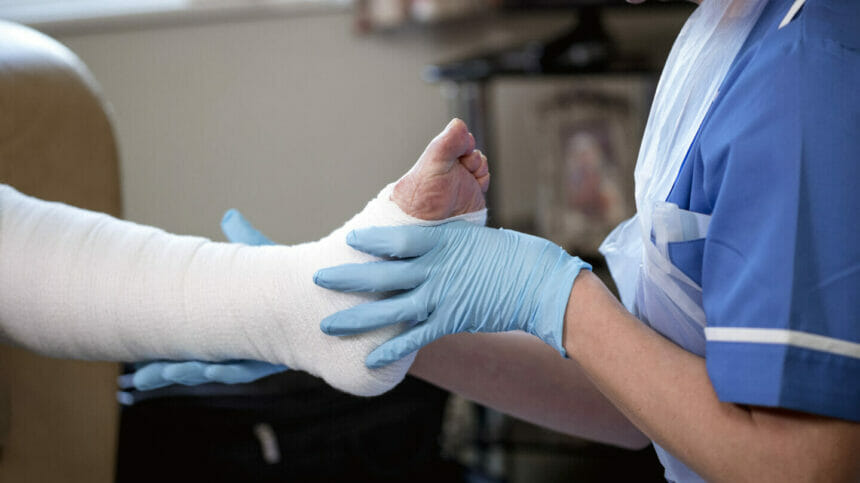
Pairing esmolol hydrochloride topical gel treatment with standard wound care resulted in significantly greater diabetic foot wound closure compared to standard wound care alone, the results of a late-stage clinical trial show. Notable benefits from the new gel were also seen in patients who have conditions that impede healing, investigators reported.
14% gel application
Esmolol is approved in the United States as a beta blocker and is not yet approved for other uses. In the new trial, investigators reformulated the drug as a 14% gel, applying it to non-infected foot wounds.
At 24 weeks, closure for ulcers greater than 2 cm2 occurred in 77% of the 120 participants who received esmolol plus standard care, and for 57% of the standard-care only group. The average time for ulcer closure was 85 days for the esmolol group.
Success in vulnerable patients
Patients with health conditions that can thwart healing, including peripheral arterial disease, anemia and nephropathy, also had more successful healing than their peers who did not receive the gel treatment. Adverse events occurred in 19% of the participants, but 88% of these events were not attributable to the study drug, the researchers said.
The study results, published Monday in JAMA Network Open, made a splash when originally presented at a conference in September. One member of the International Working Group of the Diabetic Foot called the results “amazing.” The success of esmolol surpassed that of any current medical interventions for these ulcers, they told Medscape Medical News at the time.
A ‘major advantage’
Even with the best of therapy, only about 30% of wounds associated with diabetes heal despite the availability of advanced treatment modalities, the researchers noted. Ulcer recurrence is a common problem as well.
“The better results with esmolol with [standard of care] in this study, especially in patients with characteristics associated with poor wound healing, are a major advantage in wound healing in settings outside studies,” Ashu Rastogi, MD, DM, of the Post Graduate Institute of Medical Education and Research in India, and colleagues concluded.
Related articles:
SNF-linked wound clinics saw fewer patients during pandemic but unchanged outcomes
Inaccurate pressure injury reporting compromises CMS safety ratings: study
Pressure injuries found in 11% of SNF stroke rehab patients: study




